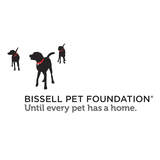|
iI adopted a senior 12 Y/O female Yorkiepoo (Misty) from shelter in June 2022. Immediately made an appointment since her nails were so long and her hair needed trimmed. She has been grooming my dogs for years, no problem. Well, now way she could do anything but, clip one nail after spending a few hours with her. Next made an appointment with another local groomer with meds from vet, but still could not do her. Tried another groomer, that grooms difficult dogs, again no grooming. Only thing to try next was the vet prescribed another med (Gabapentin) & was going to put her out for shave & trim nails (COST $200). Cannot keep doing this – too expensive. She is in need of another nail trim & bath (Tried, NO COOPERATION), hair trim. I've tried to trim around her face, but she only allows me a few scissor clips. She turned 13 in December, but still acts like a pup. She gets along with my other dogs and I love her very much. I am 79 y/o with thin skin and her nails scratch me up, plus she keeps scratching up my silver appliances. Is there any advice or help you could offer to me? Thanks, Judi. Dr. Betsy's advice: Dear Judi,
My suggestion would be to ask your vet if you can get the gabapentin to give her at home. We use it on cats that won't let us touch them at the shelter, and it often makes them very easy to work with. Maybe have your vet give you a dose to try at home to see how it affects her, and if it seems to make her nice and mellow you can get another dose to give her before you take her to the groomer. I hope this helps. Dr. Betsy
1 Comment
"When my daughter passed 2 years ago she and her dog were living with me. She's an Australian shepherd mix and a rescue. She is a fear biter and I haven't had her to the vet myself. I'm not sure what to do.” Hi,
My best advice to you is to find a veterinary practice in your area that is certified "Fear Free." This is something relatively new, but many practices are embracing it. These Fear Free practices use a variety of techniques to make a visit to the vet easy and pleasant for your pet. They even use calming medications, if necessary, that you can give at home before going there, to relax your Aussie mix before she even heads out the door. I would call and talk to someone at that practice, tell them your situation, and see what they suggest. Fear Free practices are willing and able to try various things until they find what works best for your dog. If you are unable to find such a practice, please get back to me, and we can talk about how to get your dog comfortable wearing a muzzle. Muzzles, obviously, prevent the dog from being able to bite. But, since a dog is smart enough to realize that they can't bite when they are muzzled, they actually calm down some once the muzzle is on. Good luck. And kudos to you for caring for your daughter's dog, even though she is a bit of a tough customer. We all need love, the easy ones and the tough ones. I applaud you. Dr. Betsy Hello, fellow Allegheny Valley pet lovers! My name is Betsy Kay Kennon
VMD. They call me Dr. Betsy here at the shelter. I have been the volunteer veterinarian here for over four years now and am very proud of what we do. Animal Protectors would like to give you an opportunity to ask any veterinary questions you may have about your pets and their medical care, so we are starting this "Ask the Vet" column. I have been a veterinarian for over forty years, so I should know the answer to most of your questions. If I don't, I will find someone who does. That way we will both learn something. I thought I would start things off today with a question I hear a lot this time of year.... "What should I watch out for during the holiday season that could be a hazard to my pets?" First, let me dispel a myth. Poinsettia plants are not poisonous. If a dog or cat should eat part of a poinsettia plant, they may have some vomiting and/or diarrhea. This is true of a lot of common house plants. Dogs and cats were not designed to eat leaves and stems. But the plant is not poisonous, and they will not die. Another myth I hear every year at this time is that turkey is poisonous to dogs. It is not. In fact, a lot of dog foods and cat foods are made with turkey. What can be hazardous, however, is feeding your pet a lot of the fatty skin or the bones of the turkey, which can make them very sick. Excess fat can cause pancreatitis, a painful abdominal disease that can be fatal especially in little dogs, and bones can cause really bad constipation, or can even cause an abdominal obstruction that requires surgery to correct. Bones can also perforate the intestines, causing a fatal peritonitis. And surprisingly, cooked bones are more of a hazard than raw bones. And, as with all foods, feeding too much of a good thing can cause a GI upset. So feel free to share a little of the turkey with your pet. Just stick to the lean meat parts, and not too much. For cats, a big holiday hazard is the tinsel many people put on their Christmas trees. Cats have a weird habit of eating string, given the opportunity, and tinsel is shiny strings. In their intestines, the string can get stuck, then as the intestines contract and move, the string can saw right through the intestine, again resulting in a fatal peritonitis. So for cat lovers, no strings of any kind, and that means no tinsel. With lighting the tree and other electric decorations, there likely will be more electric cords around the house this time of year. Pets, both dogs and cats, can be attracted to those cords, and bite into them, resulting in a nasty electric shock. In mild cases, they will get a burn across the inside of their mouth where they bit the cord, but in severe cases they can be electrocuted. So be aware of any and all cords in the reach of your pets. When you can, put them out of reach. When you can't, you can coat them with bitter apple (you can get this in pet stores) or a really hot hot sauce so they taste too bad for the pet to want to bite. And finally, I'm sure there will be lots of chocolate goodies around this Thanksgiving and Christmas. Chocolate can be poisonous to dogs, but it depends on how much they eat, and how big the dog is, and what kind of chocolate it is. White chocolate is not very toxic at all. Milk chocolate is toxic, and dark chocolate is even worse. Baking chocolate is the worst of all. And size matters. A big dog can eat a bunch of M&M's with maybe no ill effects, but a tiny dog can get really sick from eating just one. If your dog gets into some chocolate, there are two good things for you to know. One, you can make him or her vomit it back up by giving them hydrogen peroxide by mouth, followed by a good drink of water. The dose is 1 tablespoon per 30 pounds of dog. If they don't vomit right away (but they usually do, especially if you get them to drink water after giving the peroxide), you can repeat this again 10 minutes later. If they vomit the chocolate back up, problem solved. The other thing to do is call your vet. Veterinarians have a neat device called a chocolate wheel. With this gizmo, they can plug in the weight of your dog, the type of chocolate it ate and how much it ate, and then tell you if you need to worry or not. I hope this was helpful. And I hope to be able to answer many more of your questions. You can submit your questions by emailing [email protected]. Happy Holidays! Dr. Betsy |
AuthorWrite something about yourself. No need to be fancy, just an overview. Archives
August 2023
Categories |
Animal Protectors of Allegheny Valley
|
Contact usPhone: 724-339-7388
|
Hours
|
Animal Protectors of Allegheny Valley is a 501c3 tax exempt org.
Copyright 2023-24 Animal Protectors of Allegheny Valley
Copyright 2023-24 Animal Protectors of Allegheny Valley

 RSS Feed
RSS Feed


